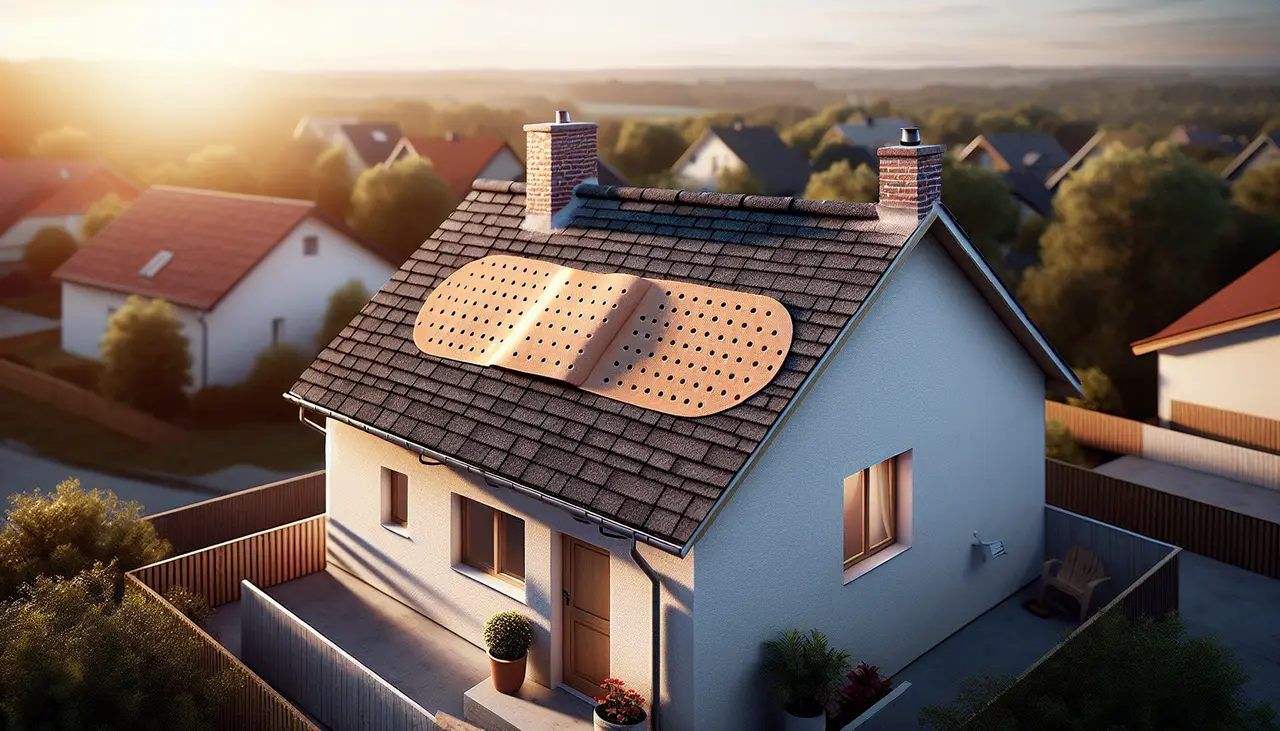Finding a dependable roofing solution can be challenging, especially with the plethora of options available. But ensuring you have a sturdy, long-lasting roof over your head is crucial. In this blog, we’ll explore the key factors that contribute to a dependable roofing solution.
Quality of Roofing Materials
The foundation of a dependable roofing solution lies in the quality of the materials used. High-quality materials like asphalt shingles, metal, or clay tiles provide better durability and longevity.
When choosing materials for a dependable roof, consider those that are specifically designed to withstand various environmental conditions. For instance, materials that are resistant to rot, mold, and pests will naturally last longer and require fewer repairs over time.
It’s also worth noting that some roofing materials come with extended warranties which can give you extra peace of mind. These warranties indicate that the manufacturer is confident in their product’s longevity and performance.
Furthermore, the aesthetic aspect of roofing materials should not be overlooked. Combining function with style means you won’t have to compromise on your home’s appearance while ensuring the roof is built to last.
Expertise of the Roofing Contractor
Hiring an experienced and skilled roofing contractor is vital. A qualified professional ensures that the roof is installed correctly, adhering to all safety and building codes.
But how do you find the right contractor? Begin by asking for recommendations from friends and family. Reviews and testimonials can also provide valuable insight into a contractor’s reliability and quality of work.
Don’t hesitate to ask potential contractors about their certifications and training. Professional credentials, such as being certified by roofing material manufacturers, can be a good indicator of their expertise.
Additionally, a reputable contractor will provide a detailed estimate and timeline for the project. Transparency in communication is an essential quality, ensuring you know exactly what to expect throughout the installation process.
Proper Installation Techniques
Even the best materials can fail if not installed properly. Proper installation techniques ensure that the roof can withstand weather elements and provide reliable protection.
A significant aspect of proper installation includes ensuring that the underlying structure is sound. This involves checking for damaged wood, proper alignment, and appropriate fastening methods.
One common mistake in roofing installations is the improper placement of shingles. Ensuring that each shingle is correctly aligned and sealed is paramount to prevent leaks and other forms of damage.
Proper installation techniques also extend to features like flashing and gutters, which are crucial in directing water away from the roof and foundation of your home. Inadequate installation of these components can lead to premature wear and costly repairs.
Finally, a thorough inspection by the contractor after installation should be standard practice. This ensures any potential issues are immediately addressed, providing you with a dependable roofing solution from the get-go.
Regular Maintenance and Inspections
Regular maintenance and inspections are essential to catch and address potential issues early. Routine check-ups can extend the lifespan of your roof and maintain its dependability.
Simple tasks, such as cleaning gutters and removing debris from the roof surface, can have a significant impact on the longevity of your roofing system. These preventative measures help maintain proper drainage and reduce the risk of water damage.
Scheduling professional inspections at least once a year is also highly recommended. A roofing expert can spot issues that the untrained eye might miss, such as small leaks or areas of wear that need attention.
Be proactive in addressing any repairs, no matter how minor they seem. Small issues can quickly escalate into major problems if left unattended, compromising the dependability of your roof.
In areas prone to extreme weather conditions, more frequent inspections might be necessary. This ensures that any damage caused by storms, heavy snowfall, or high winds is promptly identified and repaired.
Effective Ventilation and Insulation
Proper ventilation and insulation play a significant role in the overall performance of your roof. They help prevent moisture buildup, reduce energy costs, and prolong the life of the roofing materials.
Ventilation ensures that excess heat and moisture are effectively expelled from the attic, preventing damage to the roofing materials. Inadequate ventilation can lead to mold growth and wood rot, significantly shortening the roof’s lifespan.
Insulation works hand-in-hand with ventilation by maintaining a consistent indoor temperature. This helps minimize the stress placed on your roofing materials by extreme temperature fluctuations.
Energy efficiency is another critical benefit. A well-ventilated and insulated roof can reduce heating and cooling costs, making your home more comfortable year-round while paying dividends in utility savings.
Consider consulting a roofing professional to assess your current ventilation and insulation systems. They can recommend improvements that boost the dependability and efficiency of your roofing solution.
Weather Resistance Features
A dependable roof should have features that enhance its resistance to various weather conditions. This includes wind-resistant shingles, waterproof underlayment, and impact-resistant materials.
In regions prone to hurricanes or strong winds, investing in wind-resistant materials can prevent significant damage. These materials are designed to withstand high wind speeds and reduce the likelihood of shingle blow-offs.
Waterproof underlayment adds an extra layer of protection against leaks. By creating a barrier between the roofing materials and the roof deck, waterproof underlayment ensures that even if shingles are damaged, water won’t penetrate your home.
Impact-resistant materials are particularly beneficial in areas that experience frequent hailstorms. These materials can withstand the force of hailstones, preventing dents and breaks and preserving the roof’s integrity.
Consider the unique weather challenges in your area when selecting roofing features. By customizing your roof to meet local weather conditions, you enhance its reliability and durability, ensuring it remains dependable for years to come.
Wrapping Up: Ensuring a Dependable Roof
In sum, a dependable roofing solution is a result of choosing the right materials, engaging a qualified contractor, ensuring proper installation, and performing regular maintenance. By focusing on these key aspects, you can have peace of mind knowing your roof will stand the test of time.


